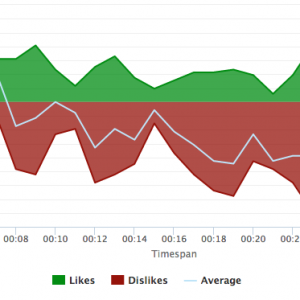A Comprehensive Guide to Conducting Competitive Research Analysis

In today’s business landscape, it is essential to conduct competitive research analysis to gain a competitive edge. By analyzing competitors’ strengths, weaknesses, opportunities, and threats, businesses can identify gaps in the market and develop a plan to address them. This guide provides practical tips and strategies to help businesses conduct effective competitive research analysis.
Understanding the Importance of Competitive Research Analysis
Competitive research analysis is an essential tool that businesses can use to stay ahead of their competitors. It involves collecting and analyzing data about competitors’ products, services, strategies, and industry trends. By understanding the competition, businesses can identify new market opportunities and develop a competitive advantage.
Competitive research analysis helps businesses in several ways:
- Identify opportunities for growth and expansion: By analyzing the competition, businesses can identify areas where there is a gap in the market and develop products or services to fill that gap.
- Develop effective marketing campaigns: By understanding what marketing strategies are working for competitors, businesses can develop their own effective campaigns that resonate with their target audience.
- Improve product development: By analyzing competitors’ products, businesses can identify areas where they can improve their own products to better meet customer needs.
- Identify potential partnerships and collaborations: By understanding who their competitors are, businesses can identify potential partners or collaborators who can help them grow and expand their business.
Identifying Your Competitors
The first step in conducting competitive research analysis is identifying your competitors. This includes direct competitors, who offer the same or similar products or services as your business, and indirect competitors, who offer products or services that are similar but not identical to yours. Identifying competitors can be done in several ways:
- Conduct an internet search: Businesses can conduct an internet search for businesses that offer similar products or services to theirs.
- Review industry directories and trade publications: Industry directories and trade publications can provide a list of businesses in a particular industry.
- Attend industry conferences and events: Attending industry conferences and events provides an opportunity to network with other businesses and identify potential competitors.
- Conduct customer surveys: Customer surveys can provide insights into where else customers shop or what other services they use.
Assessing Market Trends and Opportunities
Once businesses have identified their competitors, they should assess market trends and opportunities. This involves analyzing changes in the industry, shifts in consumer behavior, and emerging technologies. Businesses can gather information about market trends and opportunities by:
- Subscribing to industry newsletters and publications: Industry newsletters and publications can provide insights into changes in the industry and emerging trends.
- Conducting consumer surveys and focus groups: Consumer surveys and focus groups can provide insights into shifts in consumer behavior and preferences.
- Attending industry events and conferences: Industry events and conferences provide an opportunity to learn about emerging technologies and trends in the industry.
- Tracking industry blogs and social media accounts: Industry blogs and social media accounts can provide insights into emerging trends and changes in the industry.
Gaining a Competitive Edge
By analyzing competitors’ products, services, and marketing strategies, businesses can develop a competitive edge. This involves identifying gaps in the market and developing unique selling propositions that differentiate your business from competitors. To gain a competitive edge, businesses can:
- Analyze competitors’ pricing strategies: By analyzing competitors’ pricing strategies, businesses can develop their own pricing strategies that are competitive and attractive to customers.
- Study competitors’ marketing campaigns: By studying competitors’ marketing campaigns, businesses can determine what resonates with their target audience and develop their own effective campaigns.
- Identify gaps in the market: By identifying gaps in the market that competitors have not addressed, businesses can develop unique products or services that meet customer needs in a new way.
- Develop unique products or services: By developing unique products or services that address customer needs in a new way, businesses can differentiate themselves from competitors.
In conclusion, competitive research analysis is a crucial tool that businesses can use to stay ahead of their competitors. It’s important to work with companies such as Spot Trender, who can help assess market trends and opportunities, gain a competitive edge, and who can ultimately help develop a strong position in the market and achieve long-term success.
Defining Your Research Objectives
Before conducting competitive research analysis, businesses should define their research objectives. This involves setting clear goals, prioritizing key performance indicators (KPIs), and establishing a timeline for analysis.
Setting Clear Goals
Setting clear goals helps ensure that businesses focus their analysis efforts effectively. Goals should be specific, measurable, achievable, relevant, and time-bound. Examples of research goals might include:
- To understand competitors’ pricing strategies
- To identify trends in consumer behavior
- To assess the effectiveness of competitors’ marketing campaigns
Prioritizing Key Performance Indicators (KPIs)
Key performance indicators (KPIs) are metrics that businesses use to track progress toward their goals. By prioritizing KPIs, businesses can focus their analysis efforts on the most important data points. Examples of KPIs might include:
- Market share
- Sales revenue
- Website traffic and engagement
- Social media engagement
- Customer satisfaction ratings
Establishing a Timeline for Analysis
Establishing a timeline for analysis helps ensure that businesses complete their research in a timely manner. This involves setting deadlines for gathering data, analyzing data, and presenting findings. It is important to allow enough time for thorough analysis while also ensuring that deadlines are realistic.
Gathering Data on Your Competitors
Once businesses have defined their research objectives, they can begin gathering data on their competitors. This involves analyzing their websites, social media presence, customer reviews and testimonials, and marketing strategies.
Analyzing Competitors’ Websites
Analyzing competitors’ websites helps businesses understand their product offerings, pricing strategies, and marketing messaging. Businesses should pay close attention to website design, layout, and user experience. Some key questions to consider when analyzing competitors’ websites include:
- What products or services do they offer?
- How do they price their products or services?
- What is their unique selling proposition?
- What is the user experience like?
- What calls to action do they use?
Reviewing Social Media Presence
Reviewing competitors’ social media presence helps businesses understand how they engage with customers, what types of content they post, and what their follower demographics are. Businesses should analyze competitors’ social media profiles to understand:
- What types of content they post and how often
- What social media channels they use and why
- What their follower demographics are
- What their engagement rates are
- What feedback they receive from customers
Examining Customer Reviews and Testimonials
Examining customer reviews and testimonials helps businesses understand how their competitors are perceived by customers. This involves analyzing feedback on review websites, social media platforms, and customer surveys. Some key questions to consider when examining customer reviews and testimonials include:
- What do customers like about competitors’ products or services?
- What do they dislike?
- How do competitors respond to negative feedback?
- What do customers value most in competitors’ offerings?
Investigating Competitors’ Marketing Strategies
Investigating competitors’ marketing strategies helps businesses understand how they reach their target audiences and what types of messaging they use. This involves analyzing content on their website, social media profiles, and advertising campaigns. Some key questions to consider when investigating competitors’ marketing strategies include:
- What channels do they use to promote their products or services?
- What types of content do they create?
- What calls to action do they use?
- What messaging resonates with their target audience?
Conducting a SWOT Analysis
Once businesses have gathered data on their competitors, they can conduct a SWOT analysis to identify strengths, weaknesses, opportunities, and threats. This involves evaluating competitors’ products, services, and marketing strategies to determine how they compare to your business.
Identifying Competitors’ Strengths
Identifying competitors’ strengths helps businesses understand what they do well and how they differentiate themselves from the competition. This involves analyzing competitors’ products, services, and customer feedback. Some key questions to consider when identifying competitors’ strengths include:
- What features or benefits do customers value most?
- What unique selling propositions do competitors use?
- Do they offer better pricing or quality?
- What types of marketing campaigns are most effective?
Pinpointing Competitors’ Weaknesses
Pinpointing competitors’ weaknesses helps businesses identify areas for improvement and where they can gain a competitive advantage. This involves analyzing competitors’ customer feedback and conducting user testing. Some key questions to consider when pinpointing competitors’ weaknesses include:
- What negative feedback have customers provided?
- What usability issues have users reported?
- Are there gaps in the market that competitors have not addressed?
- Do competitors lack expertise in key areas?
Recognizing Opportunities for Growth
Recognizing opportunities for growth helps businesses identify new market opportunities and areas where they can expand their offerings. This involves analyzing market trends and customer feedback. Some key questions to consider when recognizing opportunities for growth include:
- Are there growing trends in the industry that competitors have not addressed?
- Are there underserved customer segments?
- What new products or services could the business offer?
- What partnerships or collaborations could the business pursue?
Evaluating Potential Threats
Evaluating potential threats helps businesses understand what could potentially harm their business and how to mitigate those risks. This involves analyzing industry trends, competitors’ products and services, and changes in consumer behavior. Some key questions to consider when evaluating potential threats include:
- Are there new competitors entering the market?
- Are there disruptive technologies that could impact the business?
- Are there changes in consumer behavior that could affect demand?
- Are there economic factors that could harm the business?
Conclusion
Conducting competitive research analysis is essential for businesses that want to gain a competitive edge. By understanding their competitors’ products, services, marketing strategies, and industry trends, businesses can identify new market opportunities and develop strategies to address them. This guide has provided practical tips and strategies to help businesses conduct effective competitive research analysis. By following these steps, businesses can gain a deeper understanding of their competitors and develop a plan to achieve long-term success.







